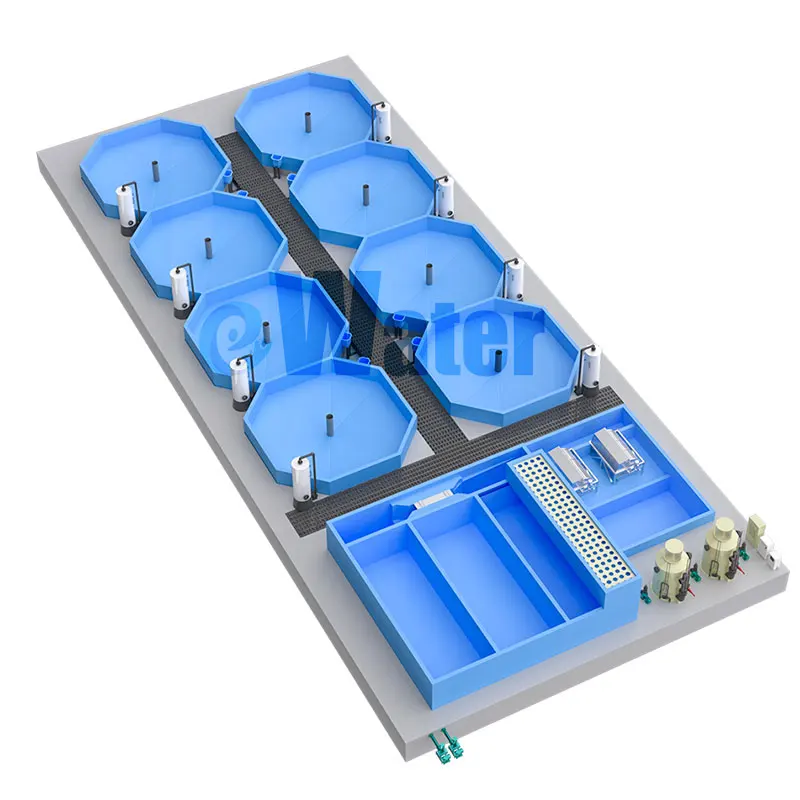Incorporating recirculating aquaculture into an established farm can be an effective way to benefit from existing infrastructure, maximize resources and improve production. On the Aquaculture side, farmers will be able to integrate farming by creating a production that harmonizes with their existing one.
A Step-by-Step Guide
If you are considering adding recirculating aquaculture systems to your operation there is no doubt you need to start with a good assessment of what you already have. Look for space available, water sources and energy supply which can be used for aquaculture. With this information in hand you will be ready to start designing and designing your system.
Then you need to decide what kind of aquaculture you want to do: fish, shrimp, or some other aquatic species. Every form of aquaculture has unique needs, it's important to do your homework and cater for the requirements of the species you plan to culture. Take into account water temperature, pH and what fish are eating when planning an aquaculture enterprise.
Once you've decided what kind of aquaculture to do, it's time to start outfitting with tanks, filters, aeration and monitoring devices. Be sure to include these elements in your farm layout for simple maintenance and user interface. The correct placement of your equipment is essential to a successfully operating aquaculture system.
After your recirculating aquaculture system is established, test water quality frequently to keep it at the ideal level for your aquatic life. Schedule routine maintenance that includes filter cleaning, equipment testing and any adjustments needed to be made. Prevent problems and maximize output by being proactive in your aquaculture system.
Integrating Recirculating Aquaculture with Your Farm Operations
Also, to integrate recirculating aquaculture with the rest of your farming operation it is important to:
Leverage what you have: Use the space, water and power from your Farm to save money and increase efficiency.
4 Integrating aquacultures with crops Aquaculture can be included as part of the existing crop farming portfolio, to develop a complementarily between systems. For example, they can use aquaculture wastewater to fertilize crops or work fish waste into the soil as a source of nutrients for plants.
Adopt sustainable practices: Utilize sustainable aquaculture methods including water recycling, energy savings and responsible feeding methods to minimize the farm’s effects on its environment as well as ensure that it stands the test of time.
Invest in training and education: Equip you and your team with the appropriate knowledge base to operate a successful aquaculture venture. Educate yourself on the newest industry trends and technologies that can help take your farm to new heights.
Following these steps and methods will help ensure that your farm’s recirculating aquaculture operation can become part of a truly integrated farm, one focused on successfully blending agriculture with aquaculture. In the end, this integration can promote production efficiency, resource conservation and sustainability for your farm.
Farming Recirculating Aquaculture How to Make Your Own Equipment
When you’re trying to bring recirculating aquaculture into your operation, having the best resources at your disposal is key to being successful. One of the initial steps is to do some research online. Some of the numerous aquaculture websites and forums offer good information and advise. Also, local agricultural extension offices or universities with aquaculture programs may be able to put you in touch with experts able to provide guidance. You can also network with industry professionals and learn about the latest in technology and in through visits to aquaculture trade fairs (shows), conferences. By incorporating these resources, you can find insightful and helpful information as you seek to integrate recirculating aquaculture in your farm.
Things to Know Before Adding Recirculating Aquaculture to The Farm
Below we highlight of few crucial considerations before adding water recirculation system in aquaculture to your farm. First thing you have to do is figure out what your farm is capable of in terms of infrastructure for an aquaculture system. That includes assessing things like water supply, electricity and space for tanks and filtration systems. You will also have to take into account the needs of the fish or other aquatic animals you’re trying to raise, such as water temperature, pH levels, and how often to feed. And be sure to check out your local regulations and permits associated with aquaculture. If you take the time to do your homework and develop a plan before incorporating recirculating aquaculture into your farm, you can position yourself for success and minimize potential problems later.
How to Make Recirculating Aquaculture Work for You
Integrating RAS into your farm, successfully doing so for that matter, means utmost precision and consideration when planning. One important advice is to start very small and then grow as you become more experienced and confident. This will help you to get your feet wet without taking on too much risk in aquaculture. It is also important to utilize high-grade equipment and technology to keep your water pets healthy. It's important to monitor and maintain your system regularly so as to avoid problems, or keep a healthy environment for growth. Finally, do not shy away from consulting with the other businesses or aquaculture organizations. Stay committed to your goals and with these tips, you should then be able to integrate recirculating aquaculture into the farm successfully and enjoy rewards that come with this sustainable farming method.

 EN
EN
 AR
AR
 BG
BG
 HR
HR
 CS
CS
 DA
DA
 NL
NL
 FI
FI
 FR
FR
 DE
DE
 EL
EL
 HI
HI
 IT
IT
 JA
JA
 KO
KO
 NO
NO
 PL
PL
 PT
PT
 RO
RO
 RU
RU
 ES
ES
 SV
SV
 TL
TL
 IW
IW
 ID
ID
 SR
SR
 UK
UK
 VI
VI
 HU
HU
 TH
TH
 TR
TR
 AF
AF
 BN
BN
 LO
LO
 LA
LA
 MY
MY
 UZ
UZ

